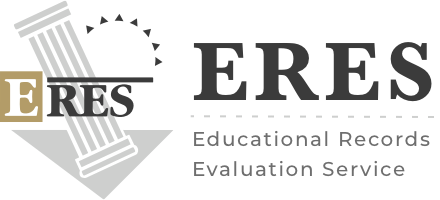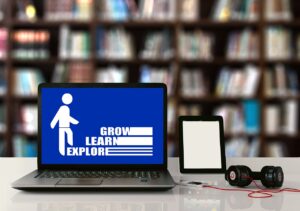Acupuncture, over the years, has established its role as a part of American healthcare. Statistics from 2018 revealed that there were 37,886 licensed acupuncturists, which is a 257% increase since 1998. The majority of practitioners are in California, with 12,135 of them, 4,438 in New York, while the are also 2,705 in Florida.
Since this method had its oriental roots, many licensed acupuncturists are foreign-trained. They also provide expertise in Traditional Chinese Medicine (TCM) in far-flung communities. In fact, there is a rise in public demand for acupuncture, with adult usage doubling from 1.0% in 2002 to 2.2% in 2022.
However, despite their training and experience, foreign-educated acupuncturists experience a significant barrier. Licensure exams are only offered in English. This language requirement poses a difficulty and complicates the clinical ability, resulting in a limited entry of otherwise qualified practitioners.
Some progressive states have tried to address this inequity through piloting translated exam programs in languages like Mandarin, Korean, and Spanish. Although these initiatives enhance access, they still cannot replace comprehensive credential evaluation.
Credential evaluation is essential for maintaining educational quality and ensuring clinical preparedness that is aligned with U.S. standards. For these reasons, this article explores U.S. acupuncture licensing, innovative state-level translation initiatives, and how these have influenced on fairness and access, especially how crucial is the role of credential evaluation services.
The Current Landscape of Acupuncture Licensing in the U.S.
Acupuncture licensure in the United States is mainly supervised by the National Certification Commission for Acupuncture and Oriental Medicine (NCCAOM). The agency governs the certification exams that serve as the standard for competency. International applicants are required to meet specific educational criteria. This includes graduation from a recognized program and successful completion of the Clean Needle Technique (CNT) training, before being authorized to test.
As stated, many foreign-trained practitioners regard the English-language requirement as a significant obstacle. Since licensure exams demand not only clinical knowledge but also high proficiency in English, it is a challenge for those who were trained in non-English-speaking countries to take on the exam. Language barriers exam poses a hindrance connected to underperformance, which is unrelated to true clinical skills.
Unfortunately, non-native English-speaking exam takers have consistently reported lower passing rates on licensure exams compared to their native counterparts. This highlights the uneven impact of language barriers on their professional opportunities.
This issue against the exam is especially critical given the demographic importance of foreign-trained acupuncturists in filling in the gaps of healthcare access. These practitioners were part of the frontliners during the COVID-19 pandemic. They offer care to disadvantaged populations where traditional medical services are lacking. States with large immigrant residents, such as California, New York, and Florida, have the highest concentration of these professionals.
State Pilot Programs for Translated Acupuncture Exams
Some states are bridging language gaps in acupuncture licensure through piloting translated exams. New York implements strong language access laws and provides translated materials for greater inclusivity. The Language Access Act of Washington, D.C., ensures that public services, including professional licensing, are available in multiple languages. Seattle’s Language Access Program also sets a great example for equitable service delivery in healthcare certifications.
These pilot programs undergo a structured translation process. Certified medical linguists translate the exams and then validate them through expert review to maintain accuracy and cultural relevance. The most commonly offered languages include Mandarin, Korean, and Spanish.
Although these programs have promising results, they still face some challenges. It is integral to ensure that the translation remains accurate to maintain consistency in the tests for everyone, and manage costs effectively. Funding comes from state education budgets or fees for professional licenses, which is why support from acupuncture boards and associations is crucial to sustain these programs.
Impact on Licensing Fairness and Access
Translated licensure exams address equity in professional licensing through separating language proficiency from clinical competence. This gives way for skilled practitioners to demonstrate their abilities beyond English fluency. Nevertheless, it is still essential that acupuncturists can communicate effectively with the patients.
Moreover, multilingual acupuncturists provide significant benefits by offering culturally sensitive care and bridging language gaps. Legal frameworks, such as anti-discrimination statutes, support equitable licensing. Other healthcare professions have also adopted translation services and extended testing for learning English.
The Continued Importance of Credential Evaluation
Since translated exams only address language barriers, credential evaluation stands an essential role for licensure. It authenticates that foreign education is aligned with U.S. standards through detailed curriculum mapping, comparing courses, clinical hours, and specialized training to state and national requirements. Verifying clinical practicums is also significant since acupuncture relies heavily on practical skills alongside theoretical knowledge.
Aside from these, credential evaluation also maintains the integrity of the licensing system by identifying fraudulent or substandard qualifications. In addition, each state often has exclusive educational prerequisites that require careful review and confirmation through credential reports. Without this protection, translated exams alone cannot safeguard the quality or readiness of international applicants.
How ERES Supports Acupuncture Professionals
Educational Records Evaluation Service (ERES) has been a trusted partner in credential evaluation since 1981 and holds membership in NACES since 1993. ERES, with over four decades of experience, provides reliable evaluations appropriate to licensing requirements across various states. Not only that it include acupuncture but for Traditional Chinese Medicine practitioners as well.
ERES have been an expert in evaluating foreign transcripts, diplomas, and degrees to ensure that these documents meet U.S. educational standards. This service also supports the professional licensure, employment, and immigration needs of individuals applying in the U.S. As ERES focuses on acupuncture education, it has a reliable precision in comparisons of foreign training to American standards, as it includes analysis of clinical hours and coursework.
In short, ERES makes the licensure process for acupuncturists trained globally efficient and straightforward.
The success of pilot programs for translated acupuncture licensure exams initiates efforts that more states should follow. The introduction of translated exams is a major step toward inclusive standards in the U.S. acupuncture profession and other health professions. Seeking reliable credential evaluations through trusted services, such as ERES, will bolster foreign-trained acupuncturists’ licensure applications. In this manner, a blend of language access and qualification verification will build a diverse, skilled acupuncture workforce that aims to address America’s healthcare needs.
References
Smith, C., Reddy, B., Wolf, C., Schnyer, R., St John, K., Conboy, L., Stone, J., & Lao, L. (2024). The state of 21st century acupuncture in the United States. Journal of Pain Research, Volume 17, 3329–3354. https://doi.org/10.2147/jpr.s469491
Anderson, B. J., Zappa, M., Leininger, B. D., & Taylor-Swanson, L. (2022). Use of Chinese herbs to treat symptoms likely related to COVID-19: Survey analysis of licensed acupuncturists in the United States. medRxiv, 2022-06.
Fan, A. Y., Stumpf, S. H., Alemi, S. F., & Matecki, A. (2018). Distribution of licensed acupuncturists and educational institutions in the United States at the start of 2018. Complementary therapies in medicine, 41, 295-301.
Sherman, K. J., Cherkin, D. C., Eisenberg, D. M., Erro, J., Hrbek, A., & Deyo, R. A. (2005). The practice of acupuncture: who are the providers and what do they do?. The Annals of Family Medicine, 3(2), 151-158.
Why English learners see this mandatory exam as an ‘unjust’ barrier to graduation. (2022, April 30). PBS News. https://www.pbs.org/newshour/nation/as-testing-restarts-in-louisiana-english-learners-see-a-big-barrier-to-graduating-rise-again
Cassidy, H., & Dacass, T. (2021). Occupational licensing and immigrants. The Journal of Law and Economics, 64(1), 1-28.
O’Neill, T. R., Marks, C., & Liu, W. (2006). Assessing the impact of English as a second language status on licensure examinations. CLEAR Exam Review, 17(1), 14-18.
Stansfield, C. W. (2003). Test translation and adaptation in public education in the USA. Language Testing, 20(2), 189-207.
Olga. (2023, October 31). NCCAOM Certification Eligibility | NCCAOM. NCCAOM | the National Certification Commission for Acupuncture and Oriental Medicine. https://www.nccaom.org/certification/nccaom-certification-eligibility/
MedStaff, C. (2024, November 7). English Language Proficiency exams: an essential immigration requirement. Conexus Medstaff. https://www.conexusmedstaff.com/english-language-proficiency-exams-f1-nurses-medical-technologists/
Malokani, D. K. A. K., Kazi, S., Chandio, S. P., Mumtaz, S. N., Darazi, M. A., & Farooqui, N. S. (2023). The correlation between English language proficiency and perceived career opportunities’. Empirical Analysis. Remittances Review, 8(4), 4818-4827.
Anderson, B. J., Zappa, M., Leininger, B. D., & Taylor-Swanson, L. (2023). Cross-sectional survey of acupuncturists in the United States who prescribed Chinese herbal medicine for patients with symptoms likely related to COVID-19. Journal of Integrative and Complementary Medicine, 29(8), 510-517.
Anderson, B. J., Zappa, M., Leininger, B. D., & Taylor-Swanson, L. (2022). Use of Chinese herbs to treat symptoms likely related to COVID-19: Survey analysis of licensed acupuncturists in the United States. medRxiv, 2022-06.
Birch, S., Alraek, T., & Gröbe, S. (2021). Reflections on the potential role of acupuncture and Chinese herbal medicine in the treatment of Covid-19 and subsequent health problems. Integrative medicine research, 10(Suppl), 100780.
Acupuncture: effectiveness and safety. (n.d.). NCCIH. https://www.nccih.nih.gov/health/acupuncture-effectiveness-and-safety
Najmabadi, S., Valentin, V., Rolls, J., Showstark, M., Elrod, L., Barry, C., … & Honda, T. (2024). Non-native English-speaking applicants and the likelihood of physician assistant program matriculation. Medical Education Online, 29(1), 2312713.
McConnell, M. (2025, May 7). Language access continues to be an important—and Contested—Part of American life. Immigration Impact. https://immigrationimpact.com/2025/05/07/language-access-important-contested-part-of-american-life/
Orchard, S. (2024, May 7). The impact of cultural and linguistic differences on test fairness | Comms Multilingual. Comms Multilingual. https://www.commsmultilingual.com/comms-news-blog/the-impact-of-cultural-and-linguistic-differences-on-test-fairness/
Smith, S. (2021, December 2). Top translated and interpreted languages in the USA. Day Interpreting Blog. https://dayinterpreting.com/blog/top-translated-and-interpreted-languages-in-the-usa/
Gong, C. (2024). Acupuncture Legislation in the United States: Minnesota as a Case Study. Chinese Medicine and Culture, 7(2), 104-118.
Advantages of educational credential evaluation explained | ERES blogs. (n.d.). ERES. https://eres.com/blog/educational-credential-evaluation-career-boost
How to become a licensed acupuncturist in the USA. (n.d.). ERES. https://eres.com/blog/how-to-become-a-licensed-acupuncturist-in-the-usa
Solano-Flores, G. (2012). Translation Accommodations Framework for Testing English Language Learners in Mathematics. Smarter Balanced Assessment Consortium.







